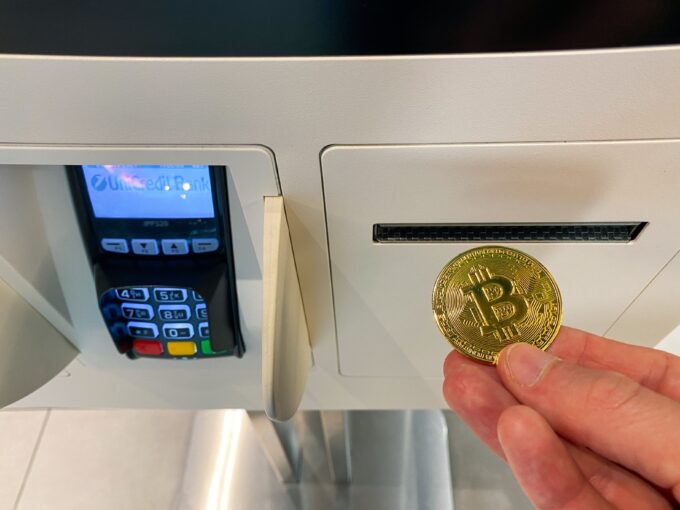The e-commerce landscape is in a constant state of flux, driven by technological innovations, shifting consumer behaviors, and market dynamics. To navigate this ever-evolving terrain successfully, businesses must keep their fingers on the pulse of emerging trends. In this comprehensive guide, we’ll delve into 10 e-commerce trends set to define the year 2024, offering insight into each trend to help you stay ahead of the curve.
1. Mobile Commerce Continues to Surge

Mobile commerce, our first trend, has been on an upward trajectory for years, and its momentum shows no signs of abating. In fact, by 2024, it is projected that mobile commerce will command a significant 73% share of all e-commerce sales. This surge can be attributed to the ubiquity of smartphones, improved mobile shopping experiences, and consumers’ desire for on-the-go convenience.
The rise of mobile commerce isn’t just about having a responsive website; it’s about crafting tailored mobile experiences. This includes optimizing websites for mobile devices, streamlining checkout processes, and leveraging mobile apps.
2. Omnichannel Retail and Multi-Channel Experiences
Our second trend, omnichannel retail, is a holistic approach to sales that aims to provide customers with a seamless shopping experience regardless of the channel they use. Whether shopping online, via mobile devices, over the phone, or in physical stores, customers expect a consistent and integrated journey. This includes optimizing websites for mobile devices, streamlining checkout processes, and ensuring inventory synchronization across channels.
3. Long-term Customer Relationships

Long-term customer relationships are the bedrock of any successful business, making it our third trend. In 2024, e-commerce retailers are increasing their focus on building and nurturing these relationships. This entails providing personalized shopping experiences, targeted advertising, and customized product recommendations using the power of data analytics and AI.
The emphasis on long-term customer relationships recognizes that acquiring new customers can be more costly and challenging than retaining existing ones. By understanding and anticipating customer needs, businesses can create loyalty and advocacy, resulting in repeat purchases and increased customer lifetime value.
4. Visual Commerce and Augmented Reality
Visual commerce and augmented reality (AR), our fourth trend, are revolutionizing the way customers experience products online. Visual commerce involves the use of images and videos to promote products, providing a more immersive and interactive shopping journey.
Augmented reality takes visual commerce to the next level by enabling customers to visualize products in their real-world environment before purchasing. For example, AR can allow customers to try on virtual clothing or see how a piece of furniture fits into their home.
These trends enhance the customer experience by providing a clearer understanding of product features, aesthetics, and fit. They reduce the uncertainty that often accompanies online shopping, boosting customer confidence and reducing the likelihood of returns.
5. Progressive Web App Technology
Our fifth trend, progressive web app (PWA) technology, is transforming the way customers interact with e-commerce websites. PWAs combine the best of both web and app experiences, offering fast, reliable, and engaging user interfaces that can be accessed from any device with a web browser, all without the need for installation.
PWAs provide an app-like experience without the friction of app store downloads and updates. They load quickly, even on slow connections, and offer features like push notifications and offline access. This technology enhances user engagement, reduces bounce rates, and improves conversion rates.
6. Voice Commerce
Voice commerce, our sixth trend, is poised for rapid growth in 2024. It involves the use of voice-activated devices and virtual assistants like Amazon Alexa and Google Assistant for online shopping. Consumers are increasingly incorporating voice commands into their daily routines, from asking for weather updates to shopping for products.
Voice commerce offers convenience and efficiency by allowing customers to make purchases using natural language. Businesses are integrating voice commerce into their e-commerce platforms to cater to this growing demand. This trend is especially relevant for businesses in sectors like groceries, where customers often rely on voice commands to add items to their shopping lists.
7. Green E-commerce
The seventh trend on our list, green e-commerce, underscores the importance of environmentally friendly practices within the e-commerce industry. Sustainability is a growing concern for consumers, and businesses are responding by adopting eco-conscious measures, such as using sustainable packaging materials, reducing carbon footprints, and implementing ethical supply chain practices.
Green e-commerce initiatives not only align with customer values but also contribute to a positive brand image and reputation. Sustainable and ethical practices are essential for businesses aiming to be responsible global citizens and minimize their ecological impact.
In 2024, businesses that prioritize green e-commerce practices are reducing their environmental footprint and resonating with conscious consumers who seek environmentally responsible options.
8. Subscription Services
Subscription services, our eighth trend, are becoming increasingly popular among consumers who value convenience, personalization, and recurring deliveries. This model entails customers subscribing to receive products or services at regular intervals, often with added benefits like discounts or early access to new products.
Amazon’s Subscribe & Save program is a prime example of how subscription services operate. Customers subscribe to receive regular deliveries of products they use frequently, such as household goods or groceries. This approach not only saves customers time but also creates a predictable and hassle-free shopping experience.
9. Cryptocurrency Payments
Cryptocurrency payments, our ninth trend, are gaining traction as an alternative to traditional payment methods. Cryptocurrencies like Bitcoin and Ethereum offer fast, secure, and borderless transactions, reducing reliance on intermediaries such as banks.
As cryptocurrencies become more mainstream, more businesses are expected to accept digital currencies as a form of payment. This shift is driven by the appeal of lower transaction fees, enhanced security, and the ability to reach a global customer base without the constraints of currency conversions.
Cryptocurrency payments open up e-commerce to a broader international market, making it easier for customers worldwide to make purchases. In 2024, businesses that embrace this trend will position themselves at the forefront of the digital payment revolution, catering to tech-savvy customers seeking fast and secure transactions.
10. Print on Demand (POD)
Our tenth trend, Print on Demand (POD), is a business model where products are produced only when an order is placed. This approach eliminates the need for inventory management and reduces waste, making it an eco-friendly and cost-effective option.
The POD market is expected to exceed a value of $43.07 billion by 2032. It encompasses a wide range of customizable products, including eco-friendly items, apparel like hoodies and sportswear, premium t-shirts, hats, stationery, wall art, phone cases, drinkware, and bags. Services like Printseekers.com empower businesses to create and sell customized products with attractive profit margins.
In conclusion
These 10 e-commerce trends offer businesses a roadmap for success in 2024 and beyond. By understanding and strategically adopting these trends, e-commerce retailers can enhance the shopping experience, build lasting customer relationships, and stay competitive in an ever-evolving digital marketplace. Each trend represents an opportunity to meet consumer expectations, foster innovation, and drive growth in the dynamic world of e-commerce.













